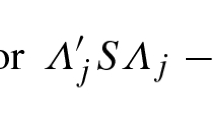Abstract
Bi-factor analysis is a form of confirmatory factor analysis originally introduced by Holzinger. The bi-factor model has a general factor and a number of group factors. The purpose of this article is to introduce an exploratory form of bi-factor analysis. An advantage of using exploratory bi-factor analysis is that one need not provide a specific bi-factor model a priori. The result of an exploratory bi-factor analysis, however, can be used as an aid in defining a specific bi-factor model. Our exploratory bi-factor analysis is simply exploratory factor analysis using a bi-factor rotation criterion. This is a criterion designed to approximate perfect cluster structure in all but the first column of a rotated loading matrix. Examples are given to show how exploratory bi-factor analysis can be used with ideal and real data. The relation of exploratory bi-factor analysis to the Schmid–Leiman method is discussed.
Similar content being viewed by others
References
Bernaards, C.A., & Jennrich, R.I. (2003). Orthomax rotation and perfect simple structure. Psychometrika, 68, 585–588.
Chen, F.F., West, S.G., & Sousa, K.H. (2006). A comparison of bifactor and second-order models of the quality of life. Multivariate Behavioral Research, 41, 189–225.
Harman, H.H. (1976). Modern factor analysis (3rd ed.). Chicago: The University of Chicago Press.
Holzinger, K.J., & Swineford, S. (1937). The Bi-factor method. Psychometrika, 47, 41–54.
Jennrich, R.I. (2001). A simple general procedure for orthogonal rotation. Psychometrika, 66, 289–306.
Patrick, C.J., Hicks, B.M., Nichol, P.E., & Krueger, R.F. (2007). A bi-factor approach to modeling the structure of the Psychopathy checklist-revisited. Journal of Personality Disorders, 21, 118–141.
Pomplun, M. (2007). A bifactor analysis for a mode-of-administration effect. Applied Measurement in Education, 20, 137–152.
Reise, S.P., Morizot, J., & Hays, R.D. (2007). The role of the bifactor model in resolving dimensionality issues in health outcomes measures. Medical Care, 16, 19–31.
Reise, S.P., Moore, T.M., & Haviland, M.G. (2010). Bi-factor models and rotations: Exploring the extent to which multidimensional data yield univocal scale scores. Journal of Personality Assessment, 92, 544–559.
Schmid, J., & Leiman, J.M. (1957). The development of hierarchical factor solutions. Psychometrika, 22, 53–61.
Simms, L.J., Grös, D.F., Watson, D., & O’Hara, M.W. (2008). Parsing the general and specific components of depression and anxiety with bifactor modeling. Depression and Anxiety, 25, E34–E46.
Yung, Y.-F., Thissen, D., & McLeod, L.D. (1999). On the relation between the higher-order factor model and the hierarchical factor model. Psychometrika, 64, 113–128.
Author information
Authors and Affiliations
Corresponding author
Additional information
An erratum to this article is available at http://dx.doi.org/10.1007/s11336-013-9346-0.
Rights and permissions
About this article
Cite this article
Jennrich, R.I., Bentler, P.M. Exploratory Bi-Factor Analysis. Psychometrika 76, 537–549 (2011). https://doi.org/10.1007/s11336-011-9218-4
Received:
Revised:
Published:
Issue Date:
DOI: https://doi.org/10.1007/s11336-011-9218-4




